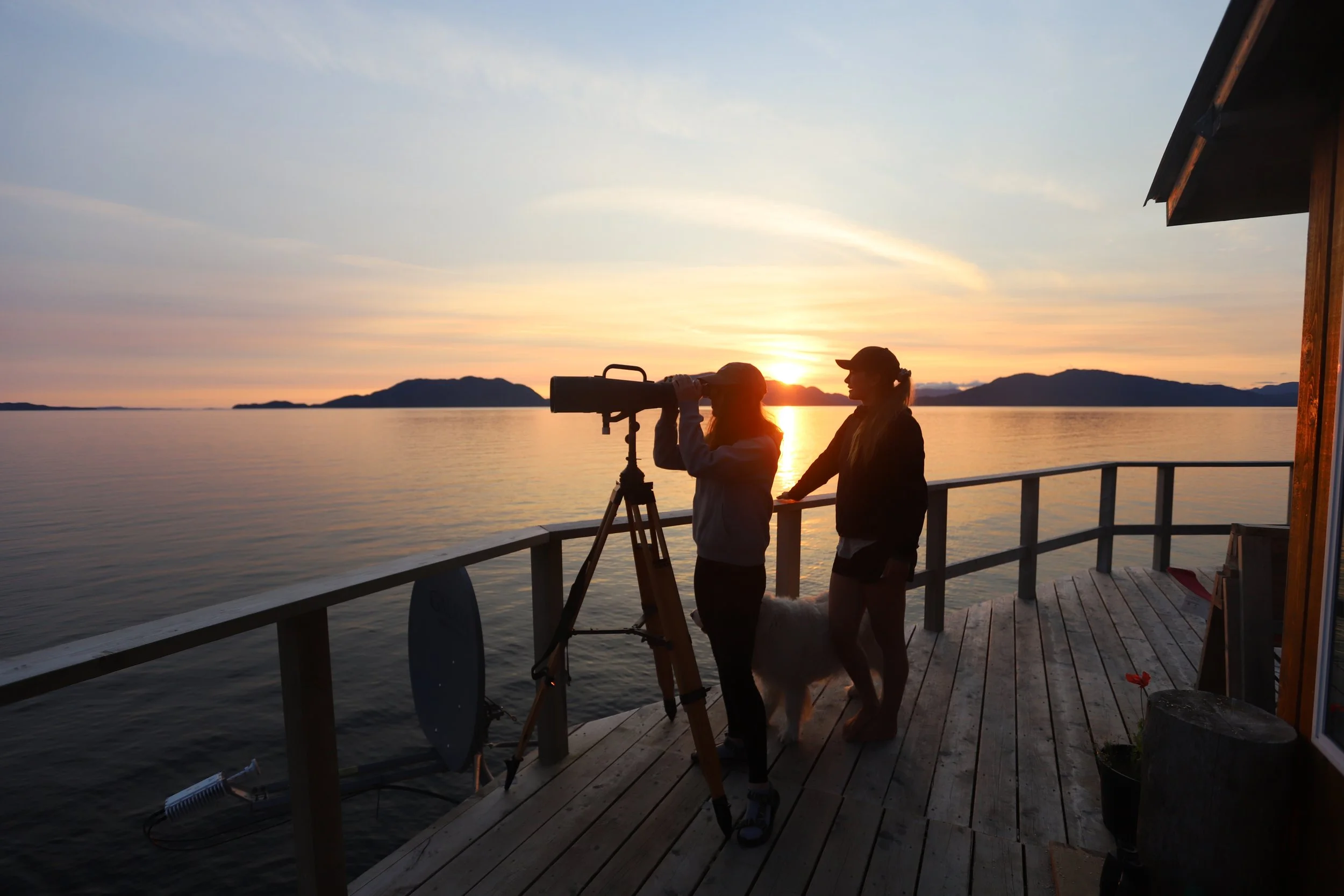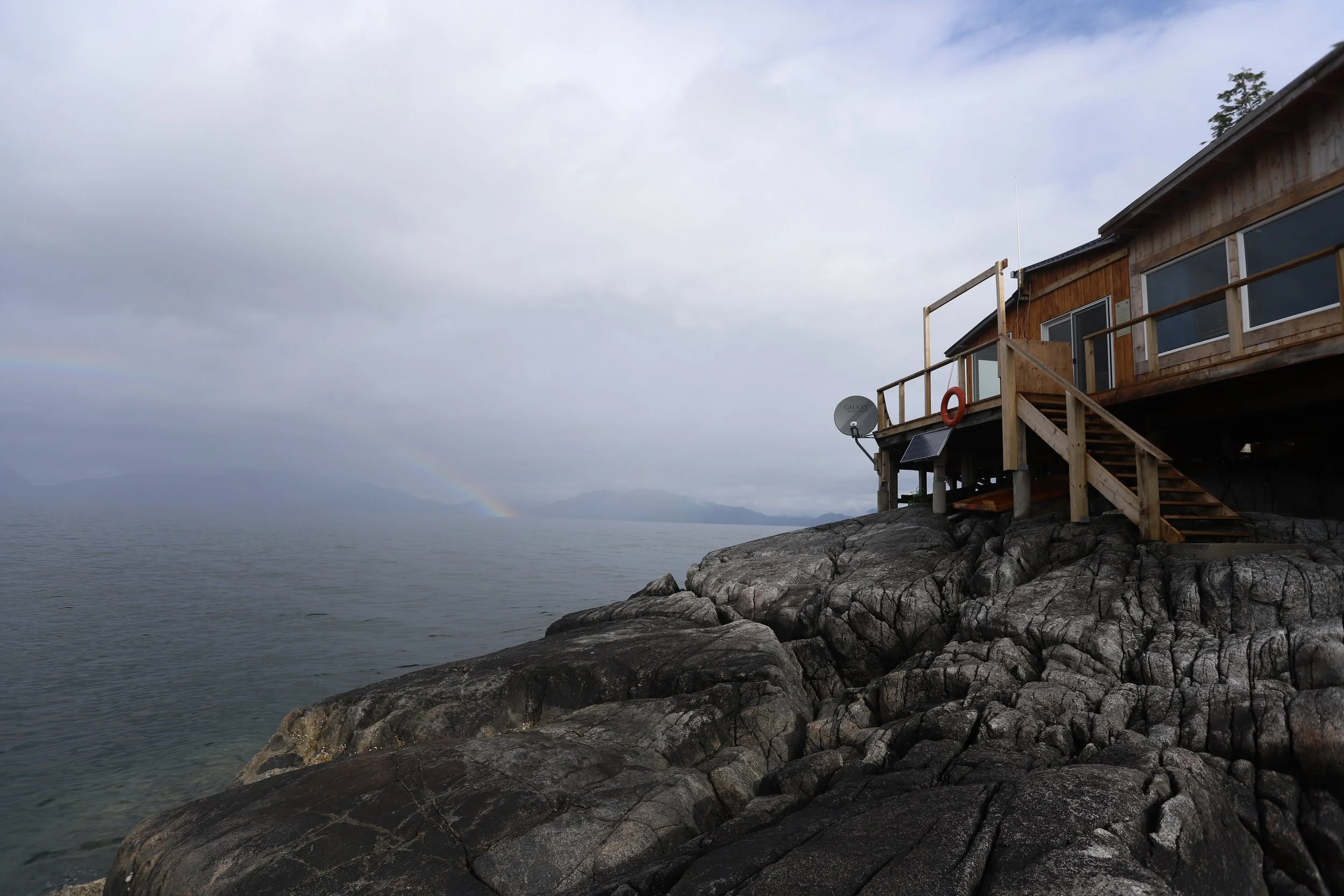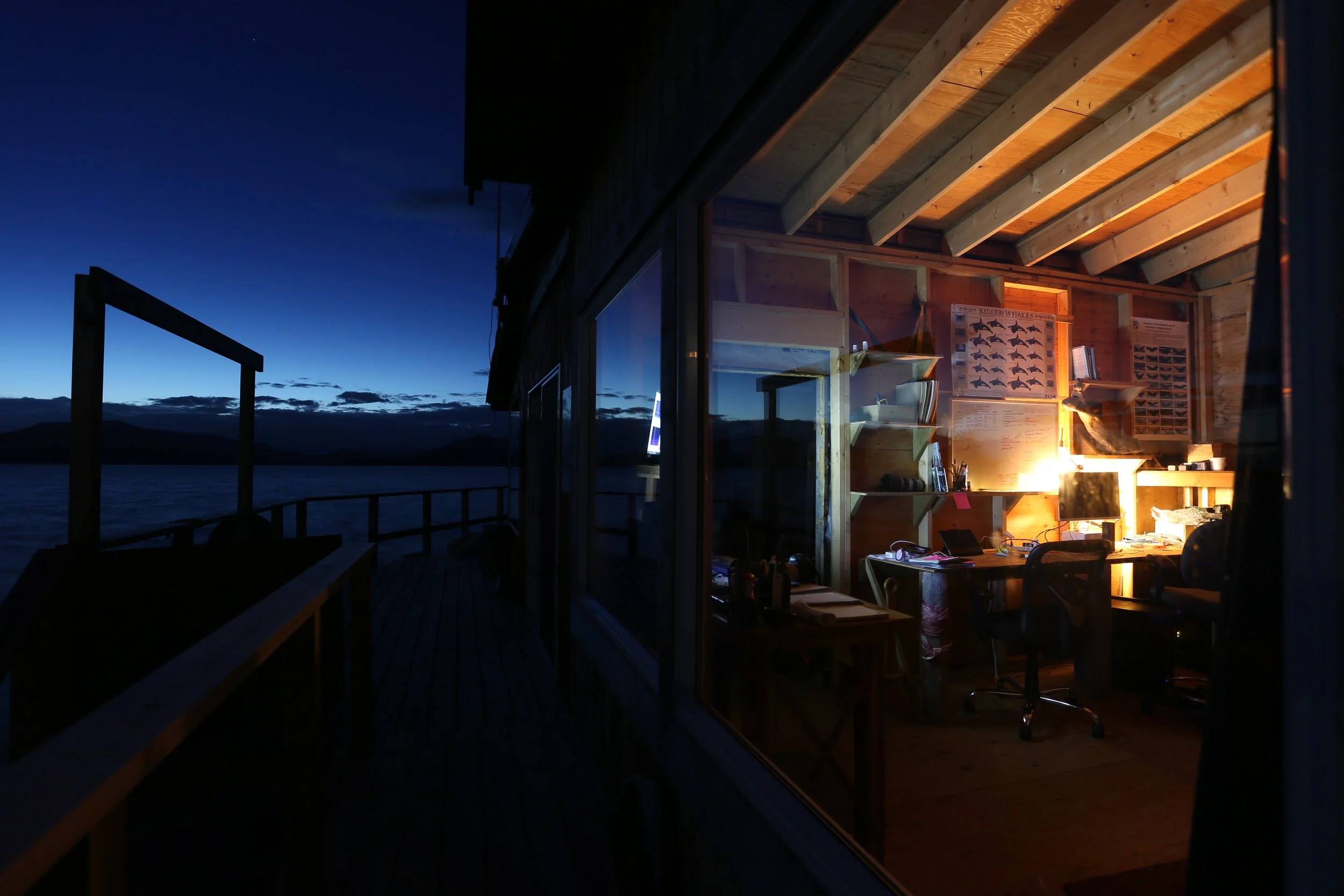High-tech hub with a view: SWAG’s Fin Island Research Centre
On the southern tip of Fin Island within Gitga’at Territory in northern B.C., Janie Wray has a front-row seat to prime whale habitat. One hour, she could witness a dozen humpbacks feeding just metres from the rocky shore. The next, her high-powered Big Eyes binoculars might spot orcas breaching in the distance.
“The view is just outstanding,” says Janie, one of the SWAG Project’s co-leads. “It’s this open, beautiful pool of whale activity right in front of you.” The vantage point makes it the perfect site for the Gitga’at Cetacean Research Station. Built in 2017, the outpost has grown from a small observation shelter into a large, high-tech hub for SWAG.
Eyes and ears on the water
A wrap-around cedar deck gives the SWAG team unobstructed views of Squally Channel. Roughly eight kilometres across, the narrow fjord is a hotspot for marine mammals and part of a future shipping route for a natural gas facility under construction in nearby Kitimat.
Every hour on the hour between sunrise and sunset, you’ll find a team member stationed on deck armed with the Big Eyes and a computer tablet. During their visual scans, they input as many details as possible about every whale they see. Not seeing one is extremely rare. In fact, Janie once documented 37 humpbacks and six fin whales in a single 20-minute scan.
They also monitor marine traffic, logging any vessels traveling through the area — including smaller boats that aren’t equipped with the Automatic Identification Systems that broadcast information about the vessel and its location.
Meanwhile, the research platform provides direct sightlines to each of SWAG’s four hydrophone relay stations, which transmit acoustic data captured by underwater microphones to Fin Island around the clock.
Once those signals arrive, AI-powered software sifts through them to pick out whale sounds, identify the species making the calls and triangulate their location. However, Janie’s 25 years of listening to whales allows her to glean more still from those vocalizations. Her highly trained ear can often identify specific families.
By bringing together these acoustic data and the visual observations, SWAG is creating powerful insights.
“To understand the behaviour of whales, you have to listen,” says Janie. “When you put a hydrophone in the water and you’re actually able to listen to what’s happening underneath the water, it completes the picture.”
From observation to action
Today, SWAG’s research is deepening our understanding of whale abundance and behaviour in the area, building on past monitoring efforts. For example, Janie points to bubble net feeding — a method humpbacks use to corral salmon or krill with bubbles from their blowholes. This common behaviour in Gitga’at Territory is now making its way to whales further down the coast.
The research is also allowing us to assess and mitigate the risk of ship strikes. This will be particularly important as vessel transits to and from Kitimat grows significantly in the coming years.
At the same time, it’s providing crucial data on noise levels. Currently, the waters in Squally Channel are quiet enough that our hydrophones can pick up the sounds of fish grunting and shrimp chirping. This lets us establish a baseline for quiet oceans that can be used here and around the world and track any shifts in whale behaviour as traffic — and noise levels — grow.
Crucial collaboration
Janie certainly isn’t alone on Fin Island. Over the course of the season, the research station hosts several other SWAG teammates, including Gitga’at Guardians, acousticians, experts in software and electrical engineering, graduate students and more. In the years ahead, our goal is to involve industry as well, finding ways to reduce the risks whales face from marine traffic.
According to Janie, that collaborative approach is key. “That’s what you need if you really want a project to work — you have different ways of thinking, different minds, different skillsets,” she says. “Working together, we can find a way to minimize the impact of shipping noise and minimize the impact of vessel strikes on whales in Gitga’at territory.”
We’re interested in collaborating with mariners who operate in this area. To find out more, please contact the SWAG Project!




